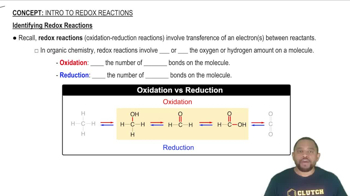Here are the essential concepts you must grasp in order to answer the question correctly.
Equilibrium Constant (K)
The equilibrium constant (K) is a numerical value that expresses the ratio of the concentrations of products to reactants at equilibrium for a given chemical reaction. It is temperature-dependent and provides insight into the extent of a reaction; a large K indicates a reaction that favors products, while a small K suggests reactants are favored.
Recommended video:
Redox Reactions
Redox (reduction-oxidation) reactions involve the transfer of electrons between species, resulting in changes in oxidation states. In the context of the given reaction, Fe2+ is reduced to Fe, while Zn is oxidized to Zn2+. Understanding the electron transfer is crucial for determining the direction and extent of the reaction.
Recommended video:
Identifying Redox Reactions
Standard Electrode Potentials
Standard electrode potentials are measured voltages that indicate the tendency of a species to be reduced or oxidized under standard conditions. These values can be used to calculate the overall cell potential for redox reactions, which in turn helps in determining the equilibrium constant using the Nernst equation.
Recommended video:
 Verified step by step guidance
Verified step by step guidance


